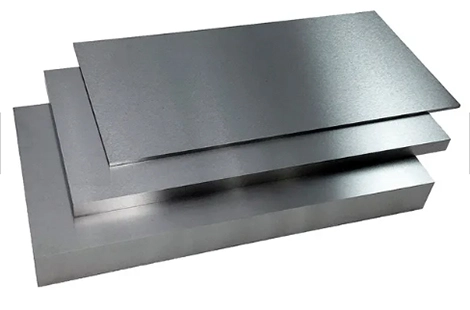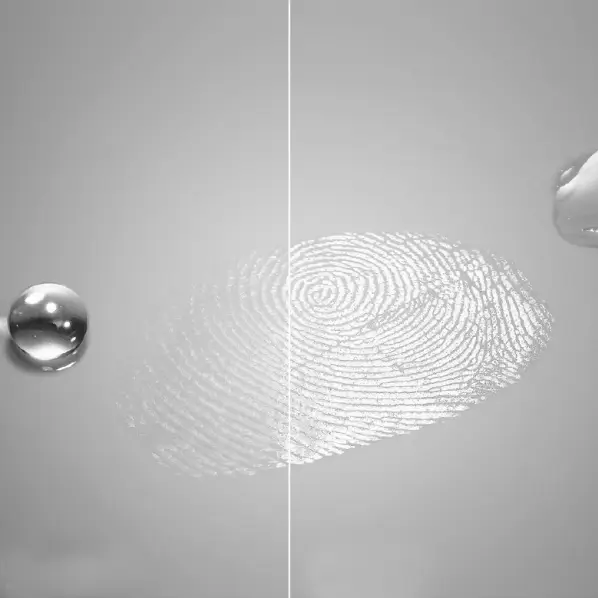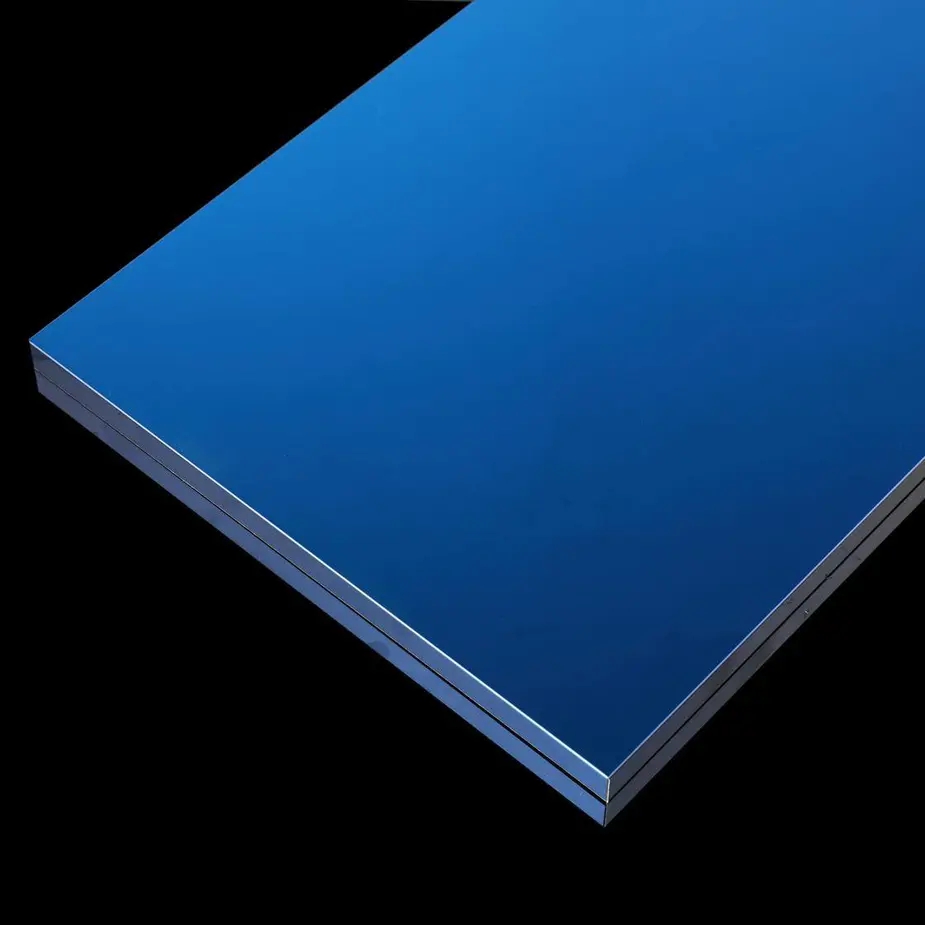In the world of modern design and architecture, stainless steel has become a staple material, renowned for its durability, corrosion resistance, and sleek aesthetic appeal. However, one common issue that plagues stainless steel surfaces is their tendency to attract fingerprints and smudges, which can detract from their pristine appearance. Enter anti-fingerprint stainless steel sheets – a revolutionary solution that combines the strength and beauty of stainless steel with an added layer of protection against unsightly fingerprints and marks.
This comprehensive guide will delve into the intricacies of anti-fingerprint stainless steel sheets, exploring their features, benefits, applications, manufacturing processes, and market trends. Whether you're an architect, designer, or simply someone who appreciates the elegance of stainless steel, this article will provide you with valuable insights and equip you with the knowledge to make informed decisions.
What are Anti-Fingerprint Stainless Steel Sheets?
Anti-fingerprint stainless steel sheets are stainless steel products that have undergone a specialized coating process, resulting in a surface that actively repels fingerprints, smudges, and other marks. This coating creates a barrier that prevents oils and residues from adhering to the surface, ensuring that the stainless steel maintains its pristine appearance even in high-traffic areas.
The coating used in anti-fingerprint stainless steel sheets is typically a transparent, nano-metallic liquid that forms a hard, solid protective film when dried. This film is firmly bonded to the surface of the stainless steel, providing an additional layer of protection without compromising the material's inherent properties or aesthetic appeal.
What is Anti-Fingerprint Coating?
Anti-fingerprint coating, also known as AFP, is a transparent, nano-metallic liquid that forms a hard, solid protective film when applied to stainless steel surfaces. This coating creates a barrier that actively repels fingerprints, smudges, and other marks, ensuring that the stainless steel maintains its clean and polished look. The science behind AFP lies in its ability to modify the surface properties of stainless steel at a nanoscale level, creating a microscopic texture that minimizes the contact area between the surface and contaminants.

Features and Benefits of Anti-Fingerprint Stainless Steel Sheets
1. Fingerprint and Smudge Resistance
The primary feature of anti-fingerprint stainless steel sheets is their ability to resist fingerprints and smudges. This is achieved through the specialized coating, which creates a surface with low surface tension, making it difficult for oils and residues to adhere to the material.
2. Ease of Cleaning
In addition to resisting fingerprints and smudges, anti-fingerprint stainless steel sheets are incredibly easy to clean. Any marks or residues that do accumulate can be effortlessly wiped away, reducing the need for frequent and intensive cleaning.
3. Durability and Scratch Resistance
The coating applied to anti-fingerprint stainless steel sheets not only repels fingerprints but also enhances the surface's hardness and scratch resistance. This added durability ensures that the sheets maintain their pristine appearance for an extended period, even in high-traffic areas.
4. Corrosion Resistance
Like traditional stainless steel, anti-fingerprint stainless steel sheets offer excellent corrosion resistance, making them suitable for use in various environments, including those with moisture or corrosive elements.
5. Aesthetic Appeal
Anti-fingerprint stainless steel sheets retain the sleek, modern look of traditional stainless steel while offering enhanced functionality. They are available in various finishes and colors, allowing for customization to suit different design preferences.
Applications of Anti-Fingerprint Stainless Steel Sheets
The versatility of anti-fingerprint stainless steel sheets makes them suitable for a wide range of applications across various industries:
-
Home Appliances: Anti-fingerprint stainless steel sheets are commonly used in the manufacturing of home appliances such as refrigerators, ovens, microwaves, and dishwashers, where they help maintain a clean and polished appearance.
-
Kitchen Cabinets and Countertops: In kitchens, anti-fingerprint stainless steel sheets are used for cabinets, countertops, and backsplashes, providing a sleek and easy-to-maintain surface in high-use areas.
-
Elevator Panels and Handrails: Elevator panels and handrails are frequently touched surfaces that can quickly become covered in fingerprints. Anti-fingerprint stainless steel helps maintain a clean appearance and reduces the need for constant cleaning.
-
Automotive Interiors: In the automotive industry, anti-fingerprint stainless steel is used for interior components such as touchscreens, control panels, and trim, enhancing the overall aesthetic of the vehicle while ensuring easy maintenance.
-
Public Spaces: In public spaces such as airports, shopping malls, and office buildings, anti-fingerprint stainless steel is used for door handles, railings, and other high-touch surfaces, contributing to a clean and professional appearance.
Manufacturing Process of Anti-Fingerprint Stainless Steel Sheets
The manufacturing process of anti-fingerprint stainless steel sheets involves several steps to ensure the desired properties and performance:
-
Surface Preparation: The first step is to ensure that the stainless steel surface is clean and free of contaminants. This involves cleaning the surface with appropriate cleaners or solvents to remove stains, grease, dust, and other impurities.
-
Nano-Scale Surface Treatment: Next, a nano-scale surface treatment is applied to create tiny structures on the surface of the stainless steel. These structures can be depressions, bumps, or nanoparticles that give the surface special properties.
-
Coating Application: After the surface treatment, a special anti-fingerprint coating is applied. This coating is typically a transparent nano-metallic liquid that forms a hard, solid protective film when dried.
-
Curing Process: The coated stainless steel sheets are then subjected to a curing process, where they are exposed to controlled temperatures to solidify the coating and enhance its durability.
-
Inspection and Testing: Finally, the treated stainless steel sheets undergo inspection and testing to ensure that the surface structure and coating are uniform and meet the expected performance requirements.
Quality Control and Standards
Manufacturers of anti-fingerprint stainless steel sheets adhere to international standards such as ASTM, AISI, GB, JIS, DIN, and EN to ensure that their products meet specific quality and performance criteria. These sheets undergo rigorous testing for scratch hardness, salt spray resistance, solvent resistance, bending properties, impact resistance, and adhesion. Certifications such as ISO, RoHS, and GREENGUARD are often obtained to demonstrate compliance with environmental and safety standards.
To protect the stainless steel surface from scratches and damage during transportation and handling, manufacturers often apply a protective film. This film can be transparent or black-and-white and is removed after installation.
Market Trends and Future Outlook
The demand for anti-fingerprint stainless steel sheets is expected to grow in the coming years, driven by increasing awareness of advanced surface technologies and the rising popularity of display-based consumer electronics. According to a recent market report, the global anti-fingerprint coatings market was valued at $748.6 million in 2022 and is projected to reach $1.29 billion by 2032, growing at a CAGR of 5.54%.
Technological advancements in coating technologies and nanotechnology are expected to further enhance the performance and durability of anti-fingerprint stainless steel sheets. This includes the development of new coatings that offer improved resistance to fingerprints, smudges, and corrosion.
Sustainability is also becoming increasingly important in the stainless steel industry. Manufacturers are focusing on developing environmentally friendly and compliant anti-fingerprint coatings, as well as reducing the environmental impact of their production processes.
Customization options for anti-fingerprint stainless steel sheets are expanding, with a wide range of colors, finishes, and patterns available. This allows for greater design flexibility and enhances the aesthetic appeal of the products, catering to diverse architectural and design preferences.
Conclusion
Anti-fingerprint stainless steel sheets offer a practical and aesthetically pleasing solution to the common problem of fingerprints and smudges on stainless steel surfaces. With their enhanced durability, ease of cleaning, and resistance to corrosion, these sheets are suitable for a wide range of applications, from home appliances and kitchen cabinets to automotive interiors and public spaces.
As technology continues to advance and demand for high-quality, low-maintenance surfaces grows, anti-fingerprint stainless steel sheets are poised to become an increasingly important material in various industries. By understanding their features, benefits, and manufacturing processes, architects, designers, and consumers can make informed decisions and incorporate these innovative materials into their projects, achieving a perfect balance of functionality and aesthetic appeal.
For more information on how to clean and maintain these surfaces, you can refer to our comprehensive guide on cleaning stainless steel coils. Additionally, if you're interested in exploring different finishes, check out our mirror stainless steel sheet products and etching stainless steel sheets.


